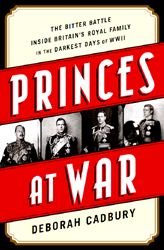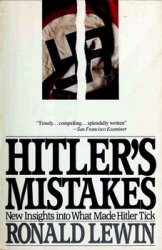Pope (1198-1216), born Lothar (Lothario) dei Conti di Segni, of aristocratic parents, in Gavignano, south of Rome, in 1160 or 1161.
Educated at Rome, Paris, and Bologna, Lothar became a cardinal in 1189 or 1190, was elected pope 8 January 1198, and consecrated on 22 February, after first being ordained priest and bishop. His main goals throughout his papacy were to safeguard what he called the liberty of the church (especially the independence of the Papal State in central Italy), to regain the Holy Land from Muslim control, and to reform the church in all its members.
The death in 1197 of Henry VI, the Holy Roman Emperor, gave Innocent the opportunity to seek a replacement who would honor the pope’s claim to the Papal State. Two rival candidates claimed the imperial crown: Otto of Brunswick and Philip of Swabia. After Philip was assassinated in 1208, Innocent crowned Otto, but Otto’s violation of earlier promises to respect papal claims led Innocent to excommunicate him and give his support to Henry VI’s son Frederick (II), king of Sicily. The full consequences of Frederick’s accession were not to become evident until after Innocent’s death. Innocent had conflicts with other princes, notably with Philip II Augustus of France over Philip’s repudiation of his wife and with King John of England over John’s rejection of Innocent’s candidate for the archbishopric of Canterbury. The latter conflict led to a lengthy interdict on England and finally, in 1213, to John’s surrender of England and Ireland to the pope, to be held by John as fiefs. This act gave John papal support against the barons of England, who forced
Upon him Magna Carta (1215). It also deprived Philip Augustus and his son of an excuse for their planned invasion of England.
Innocent initiated the crusades commonly called the Fourth Crusade (1202-1204), the Albigensian Crusade (1209-1229), and the Fifth Crusade (1217-1221) and gave his continuing support to crusades against Muslims in Spain and against heathens in the Baltic area. The crusading efforts in southern France, Spain, and Livonia achieved some success; those aimed at recovering the Holy Land did not. A few times he hinted that he might turn a crusade against nonheretical Christians whom he saw as obstructing crusading efforts, but nothing came of the threats.
Even before Innocent became pope, the papal Curia had come to see the fall of Jerusalem to the Muslims in 1187 as divine punishment for the sins of Christians, especially the sexual sins of Latin princes. Innocent embraced this view and consequently saw the reform of the church and the recovery of Jerusalem as inseparable goals to be sought by all Christians, especially by him as the vicar of Christ. The first call for the Fourth Crusade was issued in August 1198. Innocent offered a full indulgence to crusaders for those sins that they had confessed and repented, together with other privileges, notably exemption from interest payments and papal protection for the crusaders and their lands. To those who stayed at home but offered money to support other crusaders, he offered an indulgence in proportion to their donations and their fervor. This call for crusaders, and a papal tax of 2.5 percent to be imposed on clergy to finance the crusade, were generally ignored. Gradually, however, enthusiasm for the crusade began to develop, and in late 1199 and early 1200 a number of French princes took the cross.
Although Innocent intended the crusade to be under the direction of papal legates, from the very beginning its direction was in the hands of princes of France, and in 1201 they offered the leadership to Boniface, marquis of Montferrat. A few months earlier in 1201, envoys of the French princes had entered into an agreement with Venice whereby they promised to arrive in the city with a predetermined amount of money and a military force of a certain size, which would be transported to Egypt by a Venetian fleet. But as the army gathered at Venice in 1202, it had neither the money nor the numbers that the envoys had promised. The Venetians, who had produced the fleet they had promised, offered to postpone payment of the debt if the crusaders would join them in an attack on Zara (mod. Zadar, Croatia), a city

Thirteenth-century Italian fresco of Pope Innocent III. Sacro Speco (S. Scolastica), Subiaco, Italy. (Archive Iconografico, S. A./Corbis)
Claimed by the Venetians. Although Innocent had forbidden the crusaders to attack Christians except under very special circumstances and only with approval of papal legates, most of the crusaders reluctantly agreed to participate in the attack. The city was captured and sacked in November 1202, and those who participated were automatically excommunicated, although most of the crusaders other than the Venetians soon sought and received papal absolution. The crusading force defied papal orders a second time by proceeding to Constantinople (mod. Istanbul, Turkey) to restore the dethroned Byzantine emperor, Isaac II Angelos, and his son, Alexios (IV). Alexios promised substantial Greek support for the crusade once he was restored.
The Latins went to Constantinople with the expectation that they would be welcomed and supplied with men and money to continue the crusade, but continuing conflicts between the Greeks and the Latins led the latter to capture and sack the city in April 1204. They then elected one of their leaders, Count Baldwin IX of Flanders, as Latin emperor of Constantinople and declared the Greek Church reunited with Rome. Some have suggested that Innocent III was part of an early conspiracy aimed at diverting the crusade to Constantinople in order to bring the Greek Empire under Latin control. Most modern scholars, however, see the diversions as the pragmatic response of the crusaders to several difficult situations. Although Innocent had forbidden the diversion to Constantinople, he chose to see the fall of the city as a miraculous act of God, reuniting the Greek and Latin branches of the Christian church under papal authority. His enthusiasm waned somewhat as he learned of the atrocities that had accompanied the sack of the city, and the following years showed that the Latin occupation was troubled by conflicts between Latins and Greeks and among the Latins themselves, but Innocent continued to hope for the complete integration of the two churches and their combined movement to regain Jerusalem.
From early in his papacy, Innocent was concerned about heresy in Europe, especially in Italy and southern France. He authorized papal legates to work against heresy in France through preaching, reforming local clergy, and recruiting the aid of local princes. In 1208, however, after the murder of his legate Peter of Castelnau, Innocent intensified his efforts to recruit the aristocracy of France for a crusade against heretics and their supporters in the south, especially against Count Raymond VI of Toulouse. In 1209 a crusading army led by Simon of Montfort and the papal legates Milo and Arnold Amalric, abbot of Citeaux, moved from Lyons into southern France. Raymond had been accused of protecting heretics in his territories, but he himself was able to make peace with the pope. Nevertheless, the army conquered most of Raymond’s lands, as well as those of his nephew Raymond-Roger, viscount of Beziers and Carcassonne, and of Raymond-Roger, count of Foix. In 1215, with the reluctant approval of Innocent, the Fourth Lateran Council awarded the title of count of Toulouse to Simon, but warfare in the area continued until the region was brought under the control of the French monarchy in 1229. This crusade, like the Fourth Crusade, was scarcely under papal control from the time it was set in motion, but it did achieve its goal of making southern France less hospitable to heretics than it had been before. Still, Innocent’s approval of Francis of Assisi and Dominic of Osma, founders of the Franciscan and Dominican orders, respectively, was probably more important than the crusade in the long-range effort to control heresy.
Throughout most of Innocent’s papacy, the Christian kings in Spain were so often at odds with one another that the area was extremely vulnerable to Muslim expansion. Innocent continued crusaders’ privileges for those who came from other parts of Europe to defend Spain, and he worked to stop the fighting among the kings, hoping to unite them against the Muslim threat. Alfonso VIII of
Castile, Peter II of Aragon, and Sancho VII of Navarre did in fact unite and in 1212 led a combined force against Almohad Muslims from Africa. Against great odds, they achieved a remarkable victory at Las Navas de Tolosa, thereby ending the Almohad threat.
Encouraged by the success in Spain and southern France, Innocent informed Latin Christendom in 1213 that he was summoning an ecumenical council (Lateran IV), the twofold purpose of which would be the recovery of the Holy Land and the reform of the church. Innocent now expanded the notion of crusade so as to include all Christians and set up more elaborate preparations than had been attempted in the past. He appointed regional commissioners to supervise recruiting and fundraising and instructed them to allow all Christians, regardless of their suitability for combat, to take the cross, offering all, men and women alike, the indulgences and other benefits accorded to crusaders. As was the case with the Fourth Crusade, those who could not actually participate were to make contributions and would receive the indulgence in proportion to the amount of their contribution and the quality of their devotion. Prayers and processions were to be organized throughout Christendom, and chests for donations were to be placed at the churches where the processions ended. In order to focus volunteer efforts on the Holy Land, Innocent also withdrew the indulgence that had previously been offered to those crusading in Spain or southern France. In late 1215, after Lateran IV, he issued more instructions, including an itinerary to be followed through Italy or Sicily (where he would himself greet the crusaders) and a 5 percent tax to be levied on all clergy to finance the crusade.
In 1213, Innocent wrote to al-‘Adil I, Ayyubid sultan of Egypt, encouraging him to surrender the holy places so as to avoid bloodshed. But short of that unlikely development, Innocent saw crusading as an opportunity for the faithful to enrich their spiritual lives; as a duty owed to the Lord, whose lands had been occupied by the infidel; as an act of charity to those Christians suffering under Muslim control; and as a stage in God’s plan to unite the whole world under Christ and his vicar, the pope. His pontificate saw the real or apparent addition of Livonia, Bulgaria, Vlachia, Armenia, and the Byzantine Empire to the papal fold, not to mention successful military operations in Spain and southern France. He looked forward to the conversion of Jews and pagans and saw in the number 666 of the Book of Revelation a sign that the territories conquered by Muslims some 600 years earlier would soon be regained for
Christianity. However, he did not live to see the formation of his crusading army or its collapse in Egypt.
As a cardinal, Innocent wrote treatises of enduring influence, and many of his papal decretals were incorporated into canon law. He is generally regarded as one of the most important popes of the Middle Ages, second only to Gregory VII in his influence. He died at Perugia on 16 July 1216.
-John C. Moore
Bibliography
Innocenzo III: Urbs et Orbis, ed. Andrea Sommerlechner, 2 vols. (Roma: Presso la Societa alla Biblioteca Vallicelliana, 2003).
Moore, John C., Pope Innocent III (1160/61-1216): To Root Up and to Plant (Leiden: Brill, 2003).
Pope Innocent III: Vicar of Christ or Lord of the World?, ed. James M. Powell, 2d ed. (Washington, DC: Catholic University Press, 1994).
Pope Innocent III and His World, ed. John C. Moore (Aldershot, UK: Ashgate, 1999).
Powell, James M., Anatomy of a Crusade, 1213-1221 (Philadelphia: University of Pennsylvania Press, 1986).
Roscher, Helmut, Papst Innocenz III. und die Kreuzzuge (Gottingen: Vandenhoeck & Ruprecht, 1969).
Sayers, Jane, Innocent III: Leader of Europe, 1198-1216 (London: Longman, 1994).
Tillmann, Helene, Pope InnocentIII (Amsterdam: North Holland, 1980).




 World History
World History









